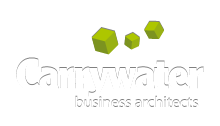Implementing an Energy Management System
Challenge
The most frequent mistake made by most companies which optimise the costs of energy is making the implementation of the review or audit recommendations a one-off project. In many cases after energy costs go relatively low, the audit report is put aside and the old habits return, making the costs of energy soar again.
Carrywater’s solution
This is not a correct approach. Once the organisation has finally become aware of where and how it uses most energy, decisions should be made with respect to the energy-inefficient areas of operations, the objectives set for each area and the methods that need to be applied to attain them. Increasing the energy awareness of the employees using effective communication channels is a key task the organisation should pursue.
Specialist employee and subcontractor training that significantly impacts the use of energy in the specific business areas proves an effective aid to the task execution process. One should also never forget the importance of the top management energy-aware behaviour, which should give example to the company’s employees.
Ensuring that energy management becomes a continuous process and a deeply rooted practice at the organisation rather than a one-shot effort should be the ultimate goal.
Business value
We approach to each implementation of an energy management system as a business transformation project, which means we conduct it in a way that reduces the resistance against the change on the one hand and minimises its impact on the final success on the other. We build energy awareness which helps the organisation to arouse interest, makes it more actively involved in the project and increases the chances of achieving the business objectives.
Deliverables
Depending on the scope agreed, our involvement usually produces the following deliverables:
- Energy Policy
- Objectives, tasks and assignment of accountability
- Energy management action plan
- Communication plan
- Identified training needs and the training plan documentation developed
